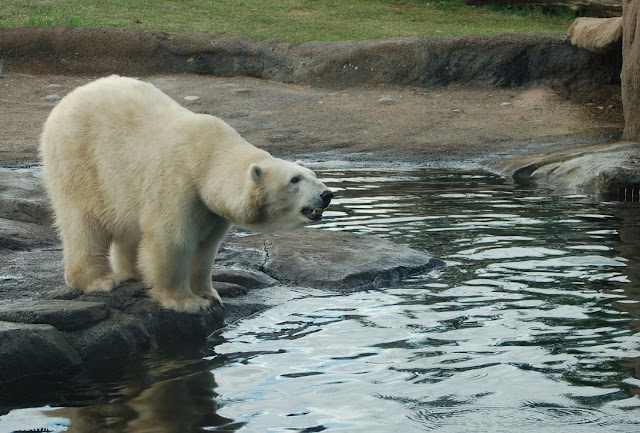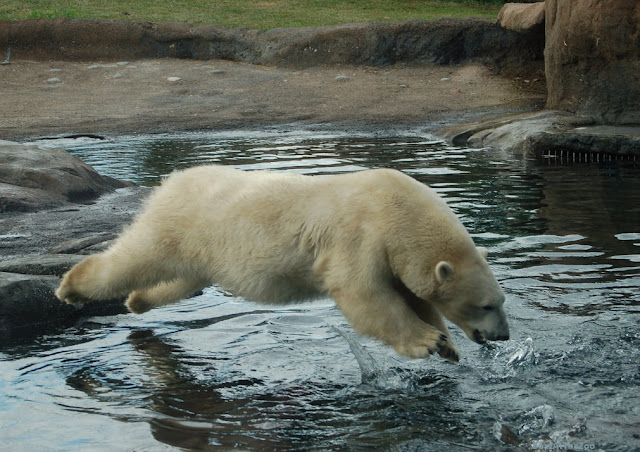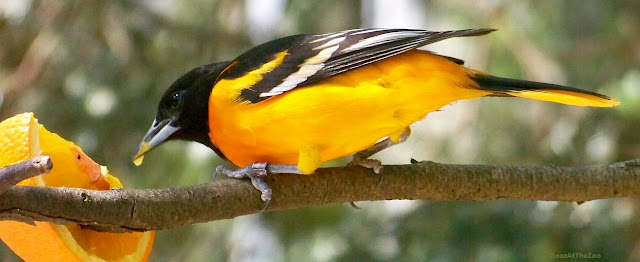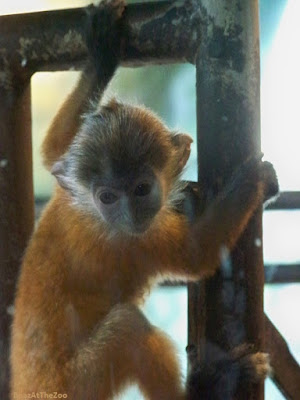The Columbus Zoo has five polar bears, including moms (and sisters) Anana and Aurora. Anana and daughter Amelia Gray were outside one morning, and daughter was in the water. Mom was dozing a ways back until a keeper appeared on the roof of the viewing building. In anticipation, mom roused herself. Keepers tossed floating fish food and the water roiled with trout. Then...
 |
| Ready! |
 |
| Set! |
 |
| Go! |
A keeper explained that Anana and Aurora, the first residents of the exhibit, learned that the fish are easier to catch while they're being fed (hence, Anana's leap). One would gather the fish food in her arms, and snacks would appear right there in front of her. The other would take food bits into her mouth and dole them out to unsuspecting trout. They also worked together to herd fish into a shallow area, or one bear would drive fish from one end of the tank to the bear at the other end. Then the bears switched places.
The keeper also spoke about the saltwater. She said there are about 100 trout in the tank and that they're generally too fast for the bears to catch. Trout are freshwater fish but can tolerate some salt. When there's too much salt, they become sluggish. When the exhibit and salinity control were new, the zoo anticipated replacing very few trout but had to replace 83.

























